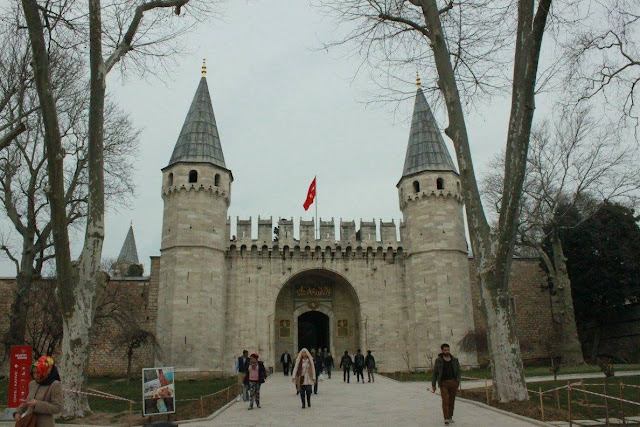The taxi rattled its way through the damp night pavement, zipping and dodging across Kennedy Cadesi, the old town's main ring road. Forty minutes earlier, and for the very first time, I had landed in Istanbul —former Constantinople, the ancient capital of the Ottomans and the Eastern Roman Empire. Broken sections of the city's walls zoomed past the car's window, where small droplets intertwined in their rainy waltz; the smooth tarmac turned to cobblestone, and after a couple of unspoken negotiations with wide trucks in narrow streets, we arrived to the hotel —an austere, yet immaculate home for the next seven days. My partner would arrive a few hours later.
Istambul's old quarter consists on an elongated, lobe-shaped peninsula flooded with generations of exquisite architecture, sandwiched tightly between crumbling decay and incipient gentrification. Istanbul is a city that devours history with the same might and dexterity that is creates it; fast-paced, monumental, with little room for the ancient, lofty discussions of its intellectuals on the subject of cherubs and lines in the sand. Every few hours, hundreds of wailing sirens rise to the call of prayer, and deep past the smell of cumin and pomegranates, two men break in a ferocious haggle. The essence of the East is alive and well, pulsating deep in a setting that feels decidedly European —not in the sterile ways of Frankfurt, but rather, in the vibrancy of post-war Paris.
The lifeline of the old town is the Divanyolu Cadesi, a parade of modern convenience designed to put any and all to-do list worries to sleep. Starting at Hagia Sophia and the Basilica Cistern, it stretches from East to West past Sultan Ahmet's Blue Mosque and the Grand Bazaar. Climb to the rooftop of one of the local cafés and you will see as far as the Topkapi Palace and the solitary Galata Tower, crowning the other side of the Bosphorus.
Alongside its sumptuous architecture, Anatolian cuisine is one of the country's most palatable offerings. Turkish food is part Arabic and part Mediterranean in equal measure, yet it is in its sweets where it enters a new category of its own, from their traditional dondurma (elastic Turkish ice cream, accompanied with agile hand tricks once scooped), to the ubiquitous baklava and the chunky, dice-shaped lokum (Turkish delight). A personal favorite was the manti: beef dumplings slathered with thick yogurt (labne) and paprika, molded by an elderly lady before my very eyes.
Across the Golden Horn it's business as usual, without the precious bubble that envelops the Old Town. Hundreds of little waterfront stores sell hardware and tools, as businessmen rush to Taksim Square past the Pera Palace. Beyoglu and Taksim stand as responses, more than neighborhoods; major tours de force built on the stubbornness of French urban design and the promise of Ataturk's Western dream. Still, the howling of the mosques resounds vaguely in the background, reminding old Constantinople of its roots and its amalgam, rather than its division —the mental division in every Turk's mind, between the chest-beating affirmation of EU membership and the country's century-old liaisons with the Arab world.
What to say about Turkey, other than my regrets not to spend more time in the country? As our Serbian driver blazed through one-way alleys and against traffic on the way to the airport, I was struck by the realization that in this controlled chaos, Istanbul was heading towards a major rebirth; one not fueled by tourism, but by the fusion of its past grandeur —with its share of frustration— and its current entrepreneurial spirit: optimistic, toiling, renewed.
Follow us next week for a short escape to Lebanon and Jordan!



















Wow ;
ReplyDeleteSo beautiful .
-Nate